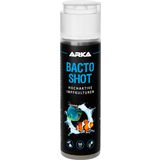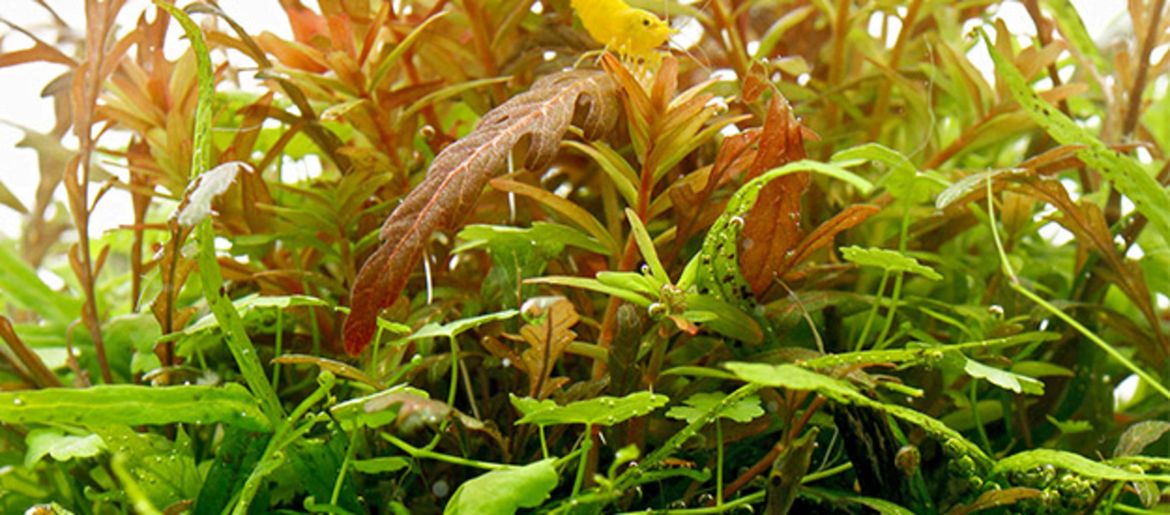To set up an aquarium
What do you need for a new aquarium!
Setting up an aquarium is really not a doctoral thesis. For everyone who doesn't really trust the topic of "aquaristics", there is a step-by-step instruction here in the blog. We will show you how to do it best and how your aquarium will be really great, even if you only just got into the topic.
The right aquarium
With a large Dennerle Nano Cube you are on the right side. The beautiful shape with the rounded corners at the front really fits into every room, and the basin is no longer that small with an edge length of 38 x 38 x 43 cm. This Nano Cube holds 60 litres - an ideal amount of water for beginners. Smaller aquariums are a bit more susceptible because the smaller amount of water doesn't buffer as much, but here you already have a very decent pool at the start. The Nano Cube is perfect for keeping shrimps and dwarf crabs, and even a single betta would feel really good here.
Included in the complete set
In the Dennerle Nano Cube Complete Style LED 5.0 we have everything our heart desires. This complete set includes the filter ( Nano Eckfilter XL), which ensures healthy, clean water and in which useful filter bacteria can settle that reduce water pollution. At the same time, the Nano corner filter is shrimp-proof and effective, with a long service life between the necessary cleanings. Even if small shrimps get into the filter space, it is impossible for them to get to the filter wheel. Simply open it and bring it out safe and sound. Furthermore, the complete set Nano Cube Complete Style comes with a Style LED L. With this lighting, you can provide even the most demanding aquarium plants with enough light so that they can grow healthy, vigorous and beautiful. The black back wall Scaper's Back is also included in the set. It provides your aquarium plants and animals with the right stage and lets their colours really shine. The complete set also comes with a substrate: with 6 kg of Sulawesi Black shrimp gravel and the DeponitMix nutrient medium, you provide your plants with a good foundation. You will also find a foam pad in the set (this is important because the smallest grains of sand under the floor glass can cause such tension that the glass scratches, the foam balances the pressure and simultaneously insulates downwards) and a cover plate that reduces evaporation and can prevent animals from jumping out.
What else do I need?
In principle, this complete set includes everything you need to get started right away. You still need possibly a timer for the light, plants, aquarium decorations (i.e. roots and / or stones - the so-called hardscape) and of course water. Animals not yet, they will come later. Check out pictures of cubes and get ideas for decorating - that's the very first step.
Where should the aquarium be?
Too much light can trigger algal blooms, and direct sunlight heats up the water quite a bit. For these reasons, your new aquarium should definitely not be directly at the window, but rather in the room. It is practical if there is a socket nearby - filters and lights need electricity. Directly in front of a heater, the water evaporation is higher, which is not bad in itself - you just have to refill it from time to time.
Before setting up
The first thing you do is attach the backing film. This works best as long as the pool is still empty because you can put it on the glass (definitely put a towel under or the foam pad so that there are no scratches). The film holds by adhesive force and contains no phthalates. Don't cut them, you'll do that later when everything is in place. A thin film of water on the back wall helps enormously when applying the film, so you first moisten the outside of the back window briefly. Then you start in a corner and put the foil on. Spread them evenly so that there are no air bubbles. It didn't work right away? Not bad at all - because no glue is used here, you can simply remove the film and start the next attempt. Maybe you need some practice, but then it looks really good. When the film is in place, use a knife to run along the edge of the glass and cut it perfectly.
Setting up
Did you find the right place? Then put the foam pad right side up and place the empty cube (now with backing film) on it.
Now it can really start! First, you attach the filter in one of the back corners. Quite a few aquarists lovingly decorated their aquarium - only to find out later that they had forgotten the filter and could change everything again because there was no space. The filter is not yet inserted!
Bed composition
Have you already thought about where the plants should sit? Very good. At this point, you fill in the culture medium. Make sure that you always leave space for the side windows - otherwise, you will see the light layer of nutrient medium later, it doesn't have to be that way. Then you spread the first layers of crystal quartz gravel in the back corners and start building your hardscape. Put the largest stones or roots and fill up with gravel as you plant. Now you also distribute gravel in the front area. Make sure that you let the ground rise to the back- much more perspective is added to your layout and it looks much deeper than if everything is just lying flat.
Prepare plants
When the roots and stones are in place and the substrate lies, you can plant. Before doing so, you should prepare the plants. Potted plants are stuffed, the stone wool is removed from the roots and divided into smaller pieces. As little as possible of the stone wool should get into the aquarium. Then cut back the roots to approx. 2-3 cm so that they have an incentive to branch well straight away. With stem plants, you can save yourself the fuss and just cut them off over the pot (which you then throw away). The individual stems take root pretty quickly as soon as you put them in the bottom of the aquarium. If you have chosen InVitro grown plants in the lidded pot, it is even easier - briefly rinse off the nutrient liquid and divide the plants into smaller pieces, done. Then dampen a kitchen towel or a few pieces of Zewa and cover the plants carefully so that they do not wither.
Plant
Planting goes very well with long planting tweezers. The easiest way is to fill in a little water until the ground in the front area is barely covered. When filling, the substrate may be swirled around, you can avoid this by placing some foil or paper in the aquarium and pouring the water on it very slowly. Now it is the turn of the foreground plants - this is where it is best to use aquarium plants that are short-lived - Marsilea, Cuban pearl herb or Glossostigma, for example. It would be a shame if there were tall plants in front that overgrow the windscreen and you could only look at a green area ...
If the foreground plants are seated, pour a little gravel on the base of the roots again so that everything also holds well and pour some water until the middle ground is slightly under water. Put some paper or foil on the hardscape to protect it. Now comes the middle ground. Rosette plants such as cryptocorynes are very popular here. With them you can plant your hardscape very nicely. You can also use your hardscape with moss or epiphytes like fern, bucephalandra or Plant Anubias - traditionally tied with a little thread or - much easier - fixed with a few drops of superglue. Don't worry, cyanoacrylate-based superglue is not toxic to your aquarium inhabitants later! When the middle ground is planted, repeat the pouring of the water.
In the background you put higher aquarium plants such as Vallisneria or stem plants .
Finished.
Do you like it? Then put your paper or foil in the aquarium one last time and fill the water up to the top. Now you insert the filter and mount the light. First set the timer to a short lighting time of 6-8 hours - the new plants first have to adjust and do not grow as quickly. If there is a lot of light, you will otherwise bring an algae plague into the house, so - first of all only illuminate little. When the plants start to grow, you can gradually increase the lighting time to 10-12 hours.
Warm-up time
Your aquarium should now run in for a few weeks without animal residents - so the biological balance can be established. You can help with preparations such as the Aquarium Starter Rapid from Dennerle, which immediately brings in the necessary microorganisms. In this case, you can use the first snails after a few days, utilise the residues and get the biological system going. If your water test (for example the WaterTest 6in1 from Dennerle) shows that there is no nitrite in the aquarium water, you can fill your aquarium step by step.
We hope you enjoy your new aquarium!
Chris Luckhaup
Latest reviews
-
 5.0 (1)
5.0 (1)ARKA BACTO-SHOT, 50 ml
-10%- Highly active bacterial cultures
- For seawater & fresh water
- Crystal clear water
£5.29 £5.90 (£105.80 / l)Delivery by April 28
-
 5.0 (8)
5.0 (8)Tropica Premium Nutrition, 300ml
-10%- Contains iron, manganese and important micronutrients
- No nitrogen and phosphorus
- Suitable for slow-growing plants
£9.71 £10.80 (£32.37 / l)Delivery by April 28
Magazine Articles:
Discover Olibetta:
-
Great Britain: Free standard delivery from £59.90
-
Free
returns -
We operate in a
climate-conscious manner. Secure payments
with SSL encryption technology
